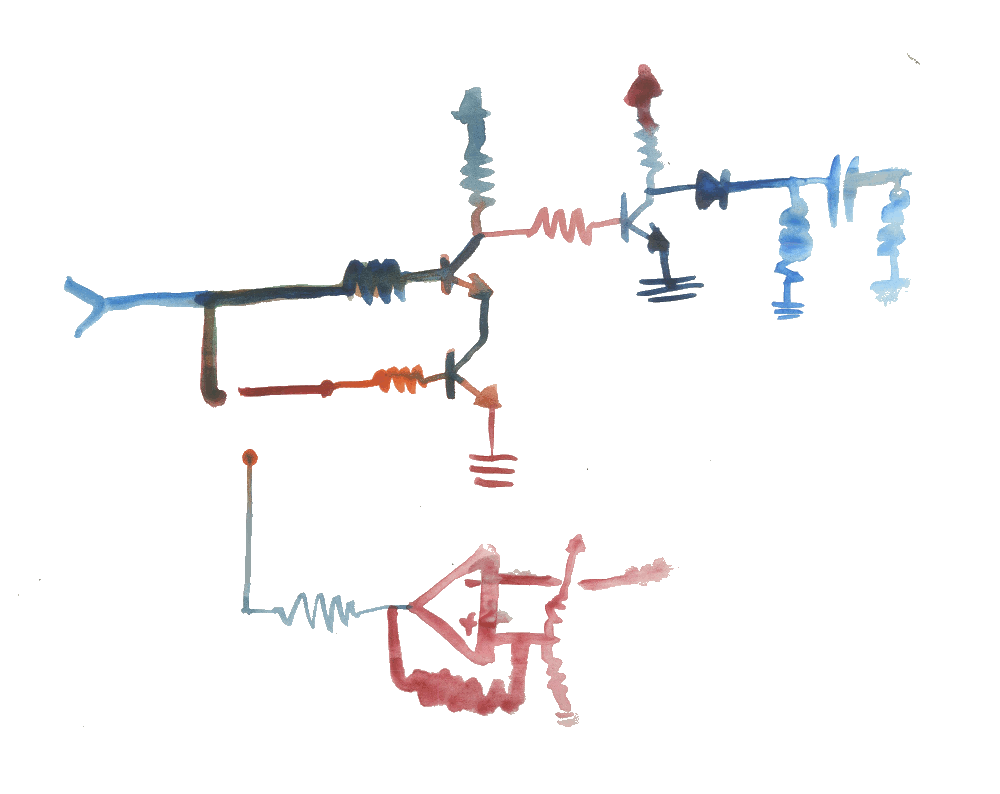More on simple envelopers
I haven't seen Mike in a while, I wonder if he is still in Baltimore. He plays one of Karl's big synthesizers called The Polygamist and as far as I know that is his instrument. We had a conversation about envelopes one time when I bumped into him at Ace hardware. He was calling the circuits that generate envelopes -- envelopers. I really like the term, I guess it's Envelope generator contracted... enveloper. Or its about envelop? like enveloping. Either way, or both ways, I think it is good.
I've got some more stuff here about simple envelopers, a re-look at the one in the double knot and the one from the previous post I wrote about simple envelopers. Not a whole lot essentially different about this design but the watercolor below includes an AND gate at the input which (while it was in the Double Knot) was not included in the schematic from the previous post.
This AND gate setup works best for some system like the double knot where there is a clock and a stream of on bits ( like from a shift register) that you want to chop up with the clock... getting individual pulses. If the AND gate is not desired, your system is not about clock and confluence. Consider this alteration below where in one switch position, both inputs are connected to same signal so as to always trip the envelope on the rising edge. The other switch position then would be a gated looping function where when the input is held high the enveloper loops.
Not much else to it really, just a darling little pair of transistors making the voltage spike instead of a comparator, so freeing up second op-amp to loop the thing. Same current sink as before, this is a staple. This circ in the looping mode is very much the opposite of the common integrator and short rampwave oscillator. This works in the fill, drain-over-time, detect-level-with-comparator-which-then-fills kind of way.
Alteration
Another thing to do may be to amp the output with a non-inverting topology. I found that with the 9V supply I was getting a 0-5V envelope. I wanted to maximize the output so I put a 223 resistor feeding back to the - input and a 103 pulling to the mid reference of 4.5V...

